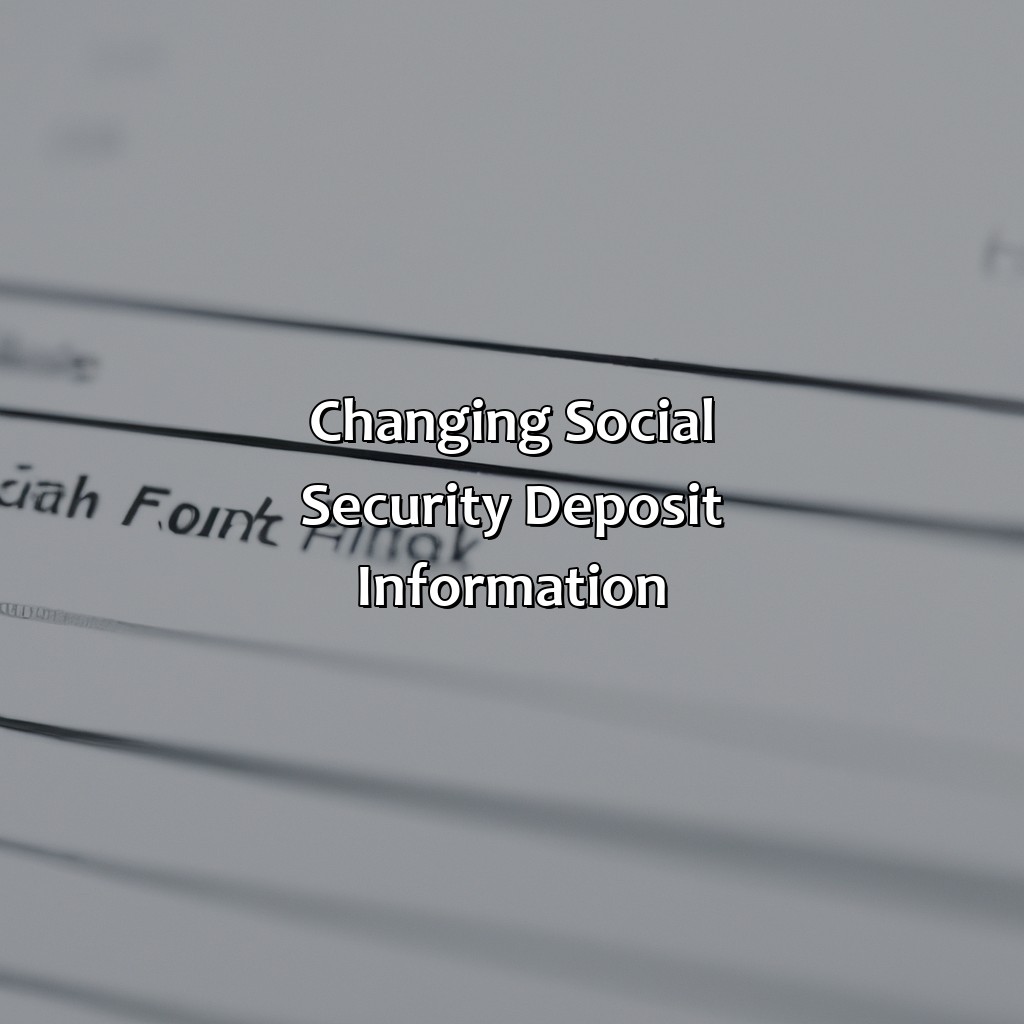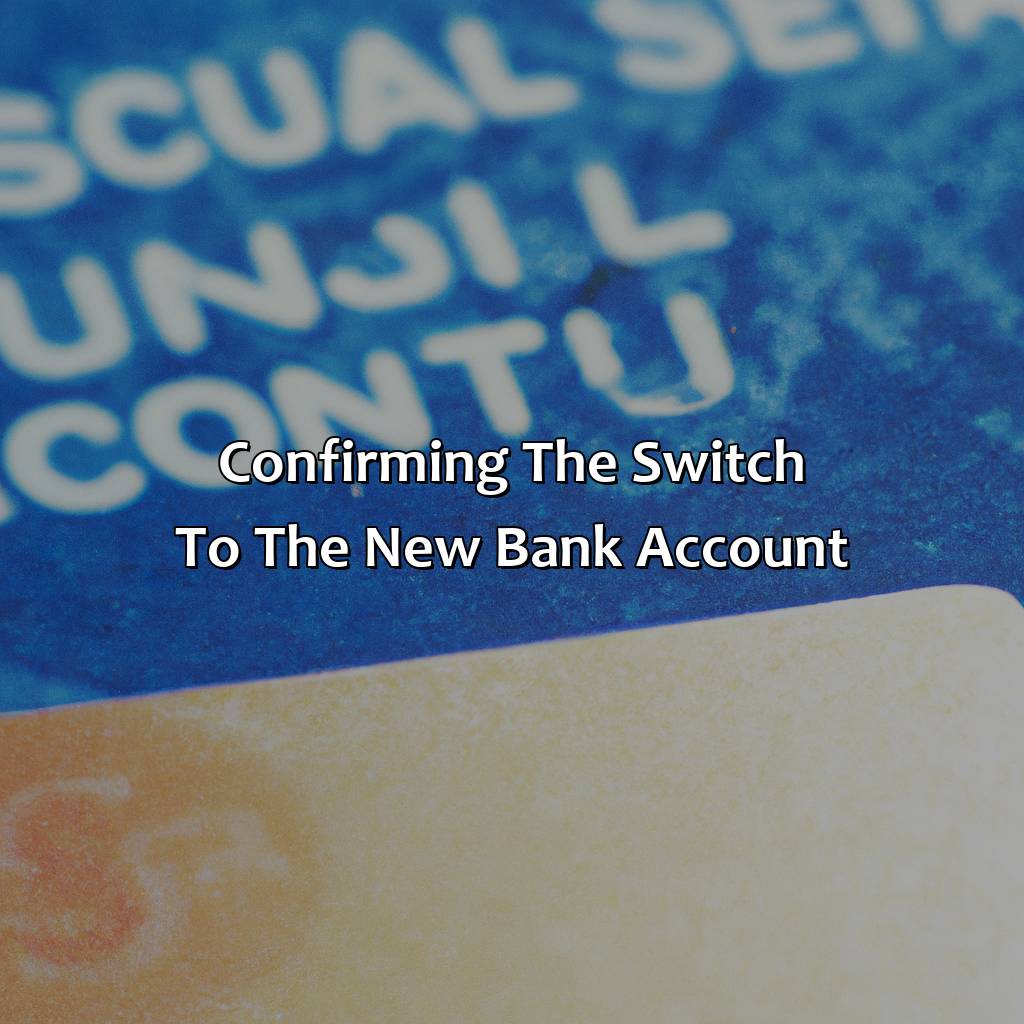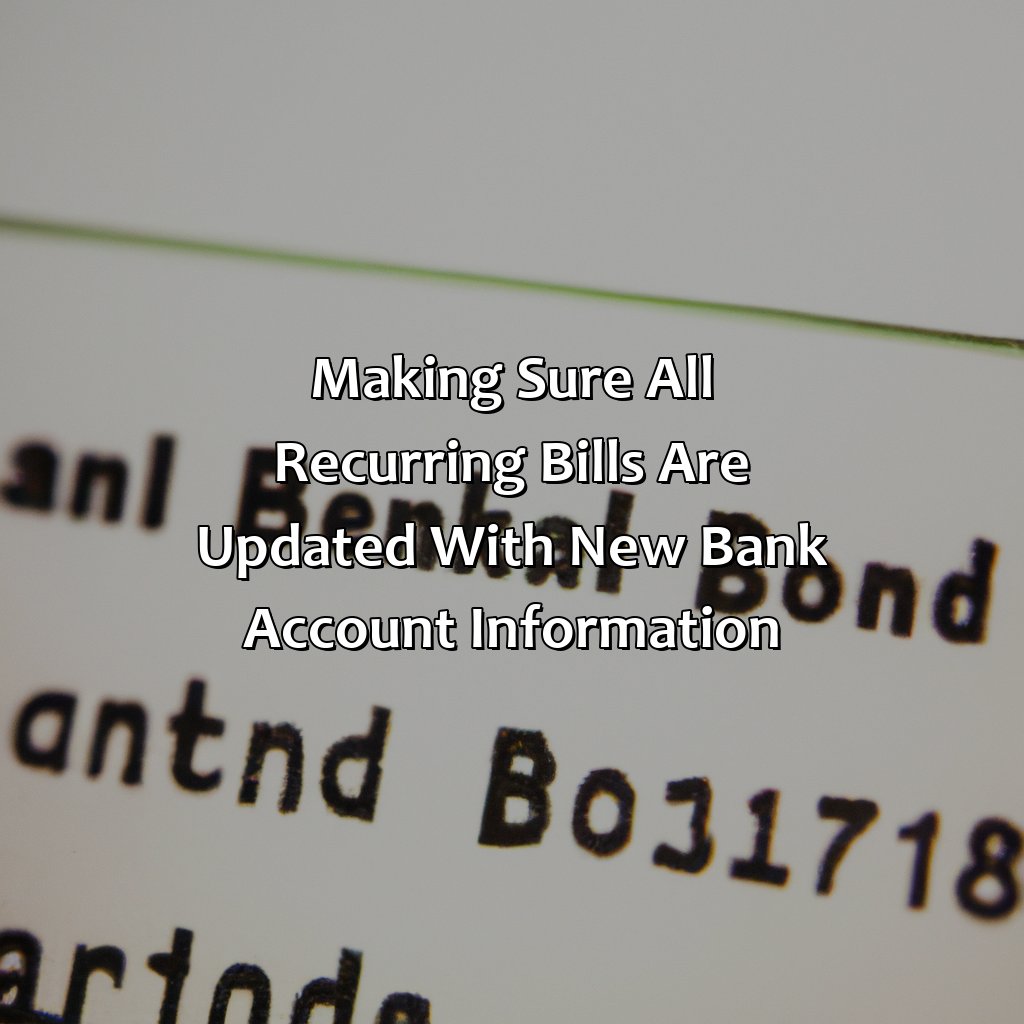How To Change Bank For Social Security Deposit?
Key Takeaway:
- Changing bank for Social Security deposit may be necessary due to reasons like fees, services, and location convenience. Researching new bank options and meeting account requirements is important when selecting a new bank.
- When selecting a new bank, it’s important to consider fees and services offered. Some banks may have monthly account maintenance fees, which can impact the amount of Social Security deposit received.
- Updating Social Security deposit information is a simple process that can be done online, by phone or in-person at a Social Security office. It’s important to confirm the switch to the new bank account and update all recurring bills with the new bank account information to ensure uninterrupted services.
Are you having trouble setting up a new bank account to receive your social security direct deposits? With our helpful guide, you can easily make the switch and manage your funds with ease.
Reasons to change bank for Social Security deposit
If you’re contemplating changing your bank account for Social Security deposit, it’s important to understand the benefits that come with making such a change.
Some compelling reasons to change your bank account for Social Security deposit include:
- Higher interest rates and lower fees
- Better customer service
- Greater access to ATMs and online banking tools
- Additional account features and perks
- Improved security protocols
- Efficiency and convenience in managing your finances
In addition, switching to a new bank account can open up opportunities to streamline your financial management and improve your overall financial wellness. However, it’s essential to consider the impact of such a change on your recurring bills and automatic payments, and to make adjustments accordingly.
Don’t miss out on the benefits of having the right bank account for your Social Security deposit. Take action today and explore your options for finding the best fit for your financial needs and goals.

Image credits: retiregenz.com by Adam Arnold
Researching new bank options
Researching and selecting a new bank for social security deposits requires careful analysis of various factors such as fees, location, ATM availability, customer service, and security. One should conduct extensive research by exploring different banks’ websites and reading customer reviews. Additionally, it is essential to compare and contrast various banks’ account options, interest rates, and overdraft protection policies. Always keep in mind that a switch to a new bank may take some time to complete, so it is vital to notify the social security administration of the change in advance.
According to the Federal Deposit Insurance Corporation, as of June 30, 2020, the largest banks in the United States by assets were JPMorgan Chase, Bank of America, and Wells Fargo.

Image credits: retiregenz.com by Harry Arnold
Opening a new bank account
Opening a fresh bank account for Social Security payments
Do you need to change banks for your Social Security payments? Opening a new bank account may be the solution. Before opening a new account, make sure you consider the fees, interest rates, and customer service at each bank. Additionally, some banks offer incentives, such as sign-up bonuses or free checks, to new account holders.
When opening a new account, make sure to bring two forms of identification and your Social Security number. Some banks may require proof of address, so bring a recent utility bill or lease agreement. After opening the account, update your Social Security information online or at your local Social Security office.
It’s important to choose a bank that meets your financial needs. In the past, there have been instances where Social Security payments were delayed due to bank errors. Researching a bank’s track record for timely and accurate transfers is recommended.
During the Great Recession, many Americans were forced to switch banks due to closures and mergers. It’s important to choose a bank that you trust and that will protect your assets. Consider banking options that offer FDIC insurance for added protection.

Image credits: retiregenz.com by James Arnold
Changing Social Security deposit information
To change the bank account for Social Security deposit, you need to update your information with the Social Security Administration. This can be done through their website or by visiting a local office. Once your information is updated, your future Social Security payments will be deposited into the new account.
It is important to note that if you are changing your bank account information due to fraud, you may need to fill out additional paperwork and provide documentation to the Social Security Administration.
Remember to update any automatic payments or direct deposits linked to your old account and keep track of the transition to ensure a smooth process.
Pro Tip: Keep a record of your Social Security account information and notify the administration immediately if any fraudulent activity is detected.

Image credits: retiregenz.com by David Woodhock
Confirming the switch to the new bank account
Confirming the Switch to the New Bank Account:
To confirm the switch to the new bank account for social security deposit, follow these steps:
- Log in to your social security account.
- Click on the “Direct Deposit” button.
- Enter the new bank account details and submit.
- Confirm the new account details and save.
Ensure that the new bank account is active and has no outstanding issues. Within a month, your social security deposit should be credited to the new account.
To expedite the process, contact your bank and social security office to ensure timely processing.
Consider setting up alerts from your bank to receive notifications about your social security deposit and account activity. This can help prevent fraud and safeguard your account.

Image credits: retiregenz.com by James Woodhock
Making sure all recurring bills are updated with new bank account information
Recurring bills need to have updated bank account information to avoid disruption of services. Follow these six simple steps to ensure all payments are made on time with new bank details:
- Make a list of recurring bills and their due dates.
- Contact each service provider and request their process for updating bank information.
- Update online bill payments with new bank account details.
- Update automatic payment settings for each bill.
- Confirm the changes with each service provider.
- Monitor the account for any failed payments and follow up with the service provider.
It’s important to keep track of which bills have been updated and to update each one promptly to ensure timely payments. Remember to monitor the account for any failed transactions. A Pro Tip is to start the process at least a month before the first payment is due to allow enough time for the updates to take effect.

Image credits: retiregenz.com by Harry Washington
Five Facts About How To Change Bank For Social Security Deposit:
You can change your bank for social security deposit by setting up a new direct deposit account with your preferred bank. (Source: Social Security Administration)
You can update your bank information online through the My Social Security portal or by calling the Social Security Administration. (Source: AARP)
It is important to update your bank information promptly to avoid missing or delayed payments. (Source: TurboTax)
You may need to provide documentation to verify your identity and bank information when changing your direct deposit account. (Source: The Balance)
If you receive Social Security benefits on a prepaid debit card, you can still change your bank information for direct deposit by contacting the card issuer. (Source: Consumer Financial Protection Bureau)
FAQs about How To Change Bank For Social Security Deposit?
How do I change my bank for social security deposit?
Changing your bank for social security deposit can be done easily with just a few steps:
- Log in to your MySocialSecurity account
- Select the “Direct Deposit” option
- Enter your new bank account information
- Submit the changes
How long does it take to change my bank for social security deposit?
Once you submit the changes to your MySocialSecurity account, it can take up to two months for the new bank information to take effect. It is recommended to keep your old bank account active until the new account is confirmed for deposit.
What happens if I don’t update my bank information for social security deposit?
If your bank account information is not updated, your social security benefits will continue to be deposited into the old account until the change is made. This can cause delays in receiving benefits if the old account is closed or inactive.
Can I change my bank for social security deposit over the phone?
Yes, you can change your bank for social security deposit over the phone. Call the Social Security Administration at 1-800-772-1213 and provide the new banking information.
Do I need to notify my old bank when changing my bank for social security deposit?
No, you do not need to notify your old bank when changing your bank for social security deposit. The Social Security Administration will handle the transfer of funds to the new account.
What if I change my mind after updating my bank information for social security deposit?
If you change your mind after updating your bank information for social security deposit, you can log back into your MySocialSecurity account and revert back to the old account information. However, it is recommended to keep old and new accounts active until the change is confirmed.
 Checkout this IRS Loophole
Checkout this IRS Loophole 
